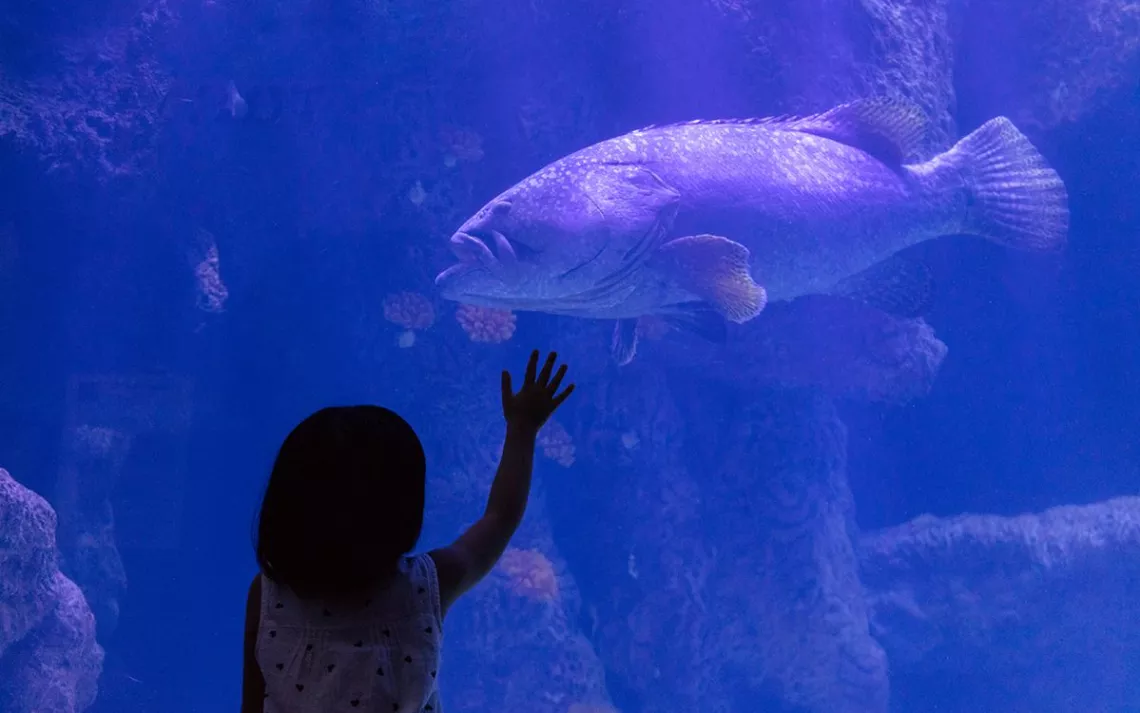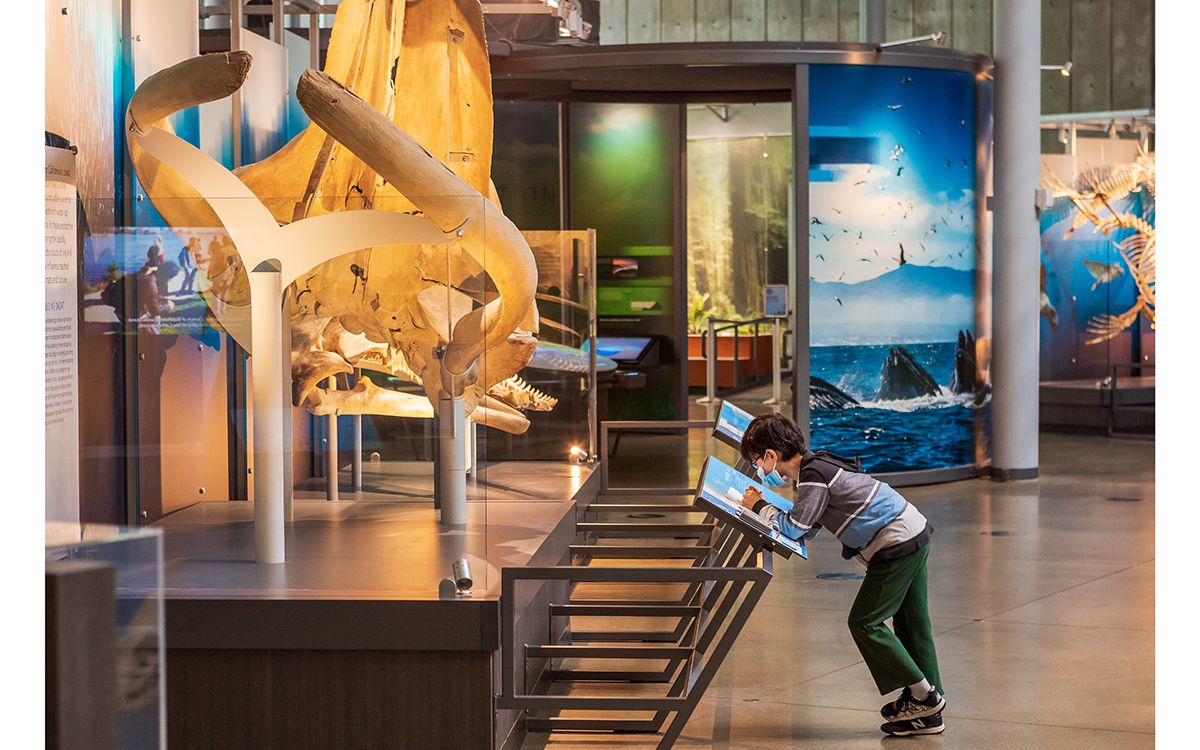Regenerating Earth: Shifting the Narrative About Nature
Science museums can help grow the movement for a thriving future

Photo by istock/Kiankhoon
The opinions expressed here are solely those of the writer and do not necessarily reflect the official position of the Sierra Club.
It’s another spectacular spring morning on the Northern California coast. Cool, crisp air carries lulling rhythms of the incoming tide, accompanied by the dawn chorus of songbirds. Also borne on the ocean breeze are wafts of blooming chaparral mixed with a bouquet of natural fragrances I can’t identify. Nearby, a turkey vulture pushes free from a eucalyptus tree for its first lazy aerial circles in the growing daylight. Soaking in this idyllic backdrop, I find myself brimming with gratitude.
Yet I’m also feeling uneasy. OK, to be frank, I am deeply anxious. And I’m not the only one feeling this way.
The past year might best be compared to a devastating tsunami, inundating the world in waves of crises: a global pandemic, deep racial unrest, wildfires, political upheaval, isolation from family and friends, and mega-storms so numerous we ran out of alphabetical labels.
This trauma has been augmented by record-high public awareness of the climate and biodiversity crises. Newsfeeds deliver near-constant proclamations of impending apocalypse. On our present course, we’re frequently reminded, numerous ecosystems worldwide will collapse before the end of this century, driving a global mass extinction and escalating humanitarian disasters.
After decades of industry-driven denials, the eco-crisis message finally seems to be sinking in. To give just one example, a recent World Economic Forum survey of 30,000 young people (under 30) spanning 186 countries found that “climate change and destruction of nature” is by far their top concern—and that’s despite the abundance of "alternative facts."
The constant doom-filled drumbeat has left most of us feeling emotionally numb, fearful, disengaged, or worse. New terms like “ecological grief” and “eco-anxiety” are being invented to describe the explosion of psychological impacts stemming from climate change and environmental degradation. In her 2020 book, Hope Matters, Elin Kelsey argues that, far from sparking widespread action, “we are fueling an epidemic of hopelessness that threatens to seal the planet’s fate.” If enough people believe the planet is doomed, it becomes a self-fulfilling prophecy.
So, for me on this pivotal Earth Day, one question stands above all others. How can humanity rapidly transform from a negative, destructive force on Earth to a positive, regenerative force?
The answer, I would argue, has less to do with external innovation—like carbon capture technologies or geoengineering—than with internal transformation. It turns out that, while the eco-crisis is a science-based fact, the stories we tell ourselves about it are wide open to interpretation.
*
Since the first Earth Day in 1970, the dominant eco-narrative has been a three-part story we might call Degrading Earth: Environments around the world are in steep decline, we humans are to blame, and without rapid action we face impending catastrophe. Several assumptions underlying this dark tale—that people are separate from nature, that we’re bad for the planet, and that the best we can do is sustain what’s left of a degraded world—are either grossly overstated or demonstrably false. Sustainability, the watchword of this story, has left us flat and uninspired.
In recent years, a compelling alternative has emerged that might be dubbed Regenerating Earth. After fully acknowledging the steep decline of the natural world, this new narrative offers a different interpretation of humanity’s role in the crisis. Because we humans are the driving force, we have the capacity to halt the decline and, in the case of biodiversity, even reverse it. That is, if we align and partner with the natural world rather than fighting against it, we can stop tearing threads from the web of life and co-create a thriving, rewilded future for humanity and our nonhuman relatives. Tapping into both science and Indigenous wisdom traditions, this story assumes that we are birthed from nature, inextricably interwoven with it, and integral to it. Put simply, we are nature.
The truth is that many impactful solutions are already well established and ready for deployment. We have solar, wind, and other kinds of renewable energy, multiplying forms of electrified transportation, and regenerative agriculture and agroforestry. Plenty of current restoration projects worldwide demonstrate our capacity to heal and rewild planetary ecosystems. To borrow the words of author William Gibson, “The future is already here. It’s just not very evenly distributed.”
In short, a thriving path forward is within our grasp, if we decide to act and follow through—now. Liminal moments like this one have a unique capacity to shake us out of our complacency, compel novel ways of thinking and being, and catalyze alternative futures. But they don’t last long. The key, then, is to rapidly build a movement capable of sharing success stories, inspiring critical collaborations, and scaling solutions. It’s time to think big and act fast.
So how might we cut through the din of negativity to launch a hopeful, large-scale movement to repair the broken human-nature relationship?
A great place to start would be nature-focused cultural institutions: natural history museums, aquariums, zoos, and botanical gardens. These organizations possess several key assets that can help shift the eco-crisis narrative, among them high public trust, deep expertise in biodiversity-related science and education, and accessible venues hosting exhibits, programs, and convenings. They attract millions of in-person visitors each year—exceeding the audiences of all professional sporting events combined—and reach millions more online. They are also leaders in the rapidly growing community science movement, using powerful apps like iNaturalist to engage nature enthusiasts worldwide in tracking species and participating in conservation activities. And natural history collections are home to the global record of life on Earth, a vast database of the past essential to plotting a thriving path into the future.
Imagine an influential subset of these organizations joining forces to spread a new story, one capable of expanding the emerging youth-driven movement interweaving climate, biodiversity, and social justice. Imagine a wide range of events—from lectures and conferences to facilitated dialogues and creative collisions between art and science—experienced both live and virtually. Imagine bringing together diverse voices, experts, and advocates to have critical dialogues, establishing the kinds of "safe spaces for dangerous ideas" needed to advance both innovation and action. And imagine this movement engaging people around the world to understand, care about, and act on behalf of nearby nature.
Isolated examples of this work already exist among nature-based cultural institutions, but thus far efforts remain sporadic and uncoordinated. We can do better.
We might begin our movement-building with a strong emphasis on BIPOC communities, which frequently do not have access to high-quality STEM learning. Many of these communities have long felt excluded from the climate and eco-crisis conversations, despite a strong interest in these topics and being located in areas among the hardest hit by environmental degradation.
During the past tumultuous year, the California Academy of Sciences, where I work, crystalized a new, purpose-based mission: We regenerate the natural world through science, learning, and collaboration. Like any mission statement worth its salt, a lot is packed into a few words.
For us, regeneration is all about healing the web of life—rebuilding the diversity, complexity, and resilience of ecosystems so that they can withstand climate change and other disturbances. And we think that, for the most part, nature will be regenerated place by place, through a process that combines biodiversity science, environmental learning, and collaborative engagement. Finally, the “We” at the head of this statement underlines our strong belief that success depends on cross-sector collaborations spanning K–12 schools, Indigenous communities, government, universities, industry, other nonprofits, and Mother Nature herself.
Mark Schwartz, a professor of environmental science and policy at the University of California, Davis, recently published a passionate plea, imploring leading conservation NGOs to band together in “building a constituency for nature.” He noted accurately that the great bulk of conservation funds comes from government coffers. And he argued convincingly that an engaged and informed public is essential if we’re going to press government to make critically needed environmental laws and investments.
I strongly concur with Schwartz’s analysis, though I would argue that science-based cultural organizations are even better suited to lead this effort. Having said that, the ideal scenario is probably for museums and other similar institutions to combine forces with NGOs and additional partners to effectively scale this work.
To get us all started, I propose a trio of campaigns. The first, focused on raising awareness, would share the positive new story onsite and through an array of traditional and new media channels. The second, aimed at boosting understanding, would consist of exhibitions, environmental learning programs, and gatherings. Finally, the third campaign, with an emphasis on catalyzing actions, would leverage highly successful community science platforms to engage the public in conservation-related activities. For example, armed with apps like iNaturalist and eBird, people can track local plants and animals through time, allowing scientists to monitor aspects of ecosystem health. Throughout all three campaigns, the emphasis would be on impactful, positive solutions to the challenges we face.
Having spent my career working in cultural organizations, I know firsthand that, with few exceptions, broadscale collaboration is not one of our strengths. And virtually all museums, aquariums, zoos, and gardens have been hit hard the past year by lengthy closures and devastating economic impacts, further limiting their capacities. Nevertheless, this pressing moment calls for us to step beyond our comfort zones, boldly reinvent ourselves, and together rise to the challenge. If not us, then who?
Earth Day—April 22—also happens to be my birthday, a nice bit of personal serendipity. This year, along with family time, I’ll be celebrating with a long solo hike on Mt. Tamalpais, just north of San Francisco. As I breathe deeply and take in the towering redwoods and coastal vistas, I’ll be picturing the kind of flourishing future for which we might all become good ancestors. This is the Great Work of our time, and I, for one, am up for it.

Reopening day at the California Academy of Sciences. | Photo by Gayle Laird/California Academy of Sciences
 The Magazine of The Sierra Club
The Magazine of The Sierra Club



